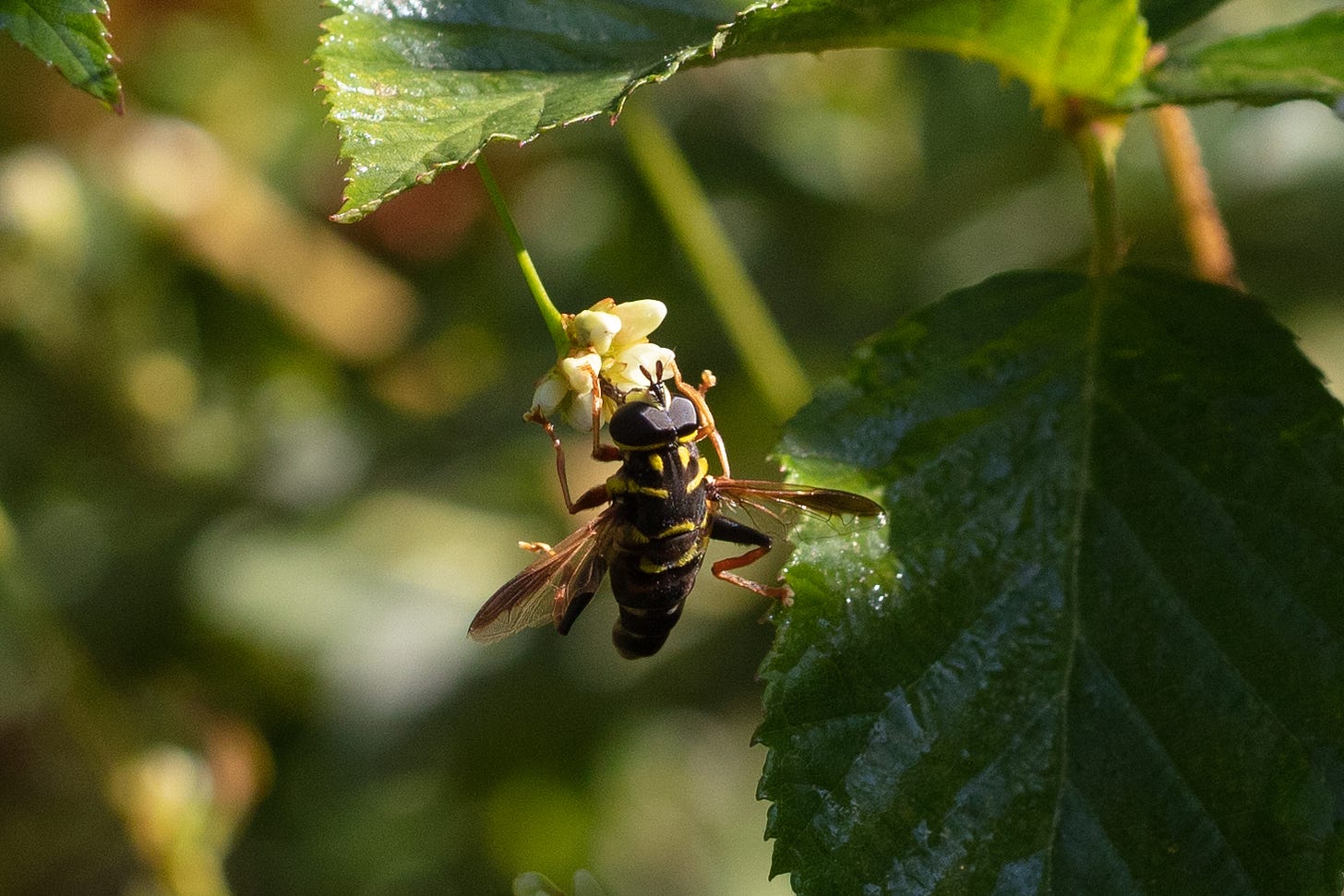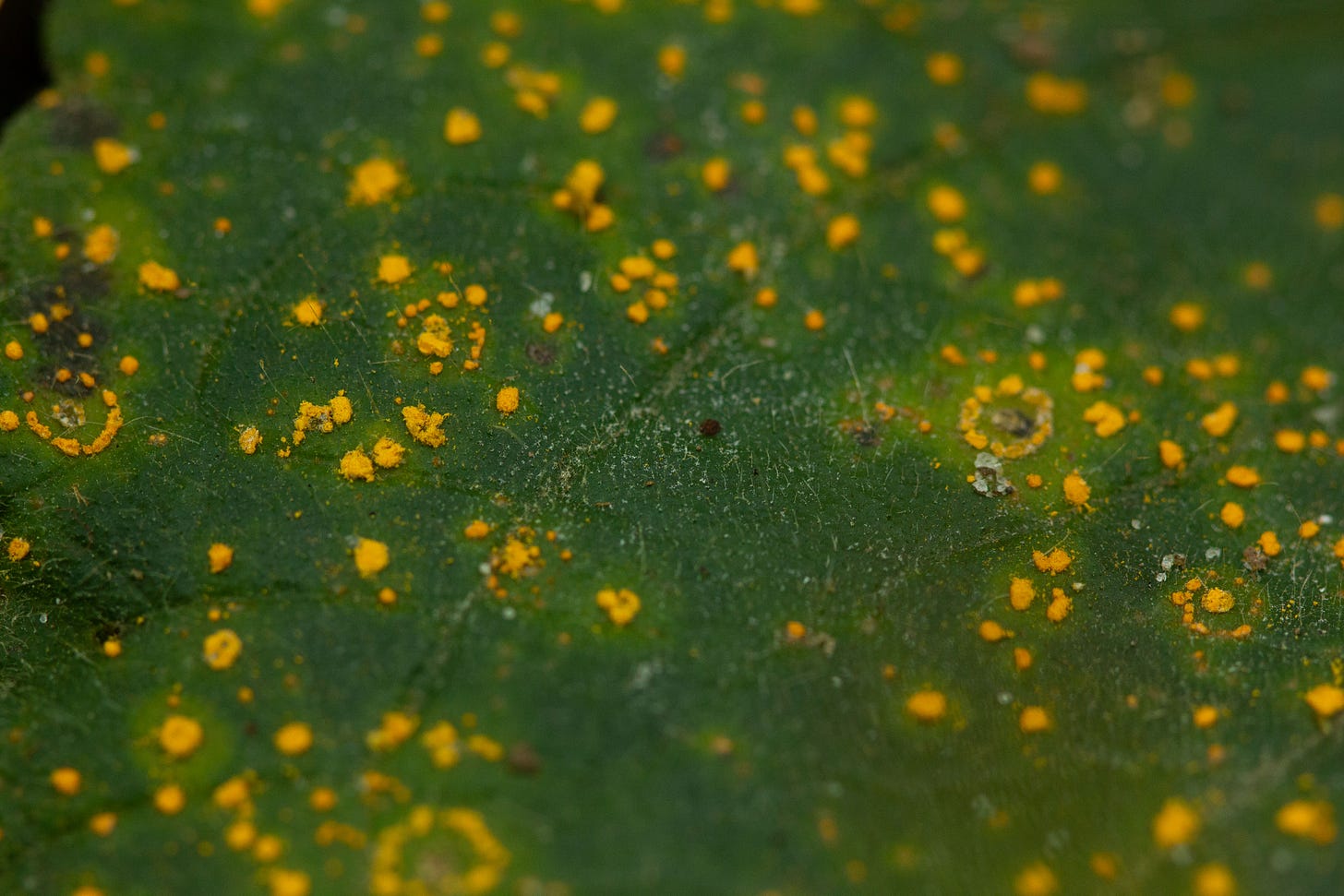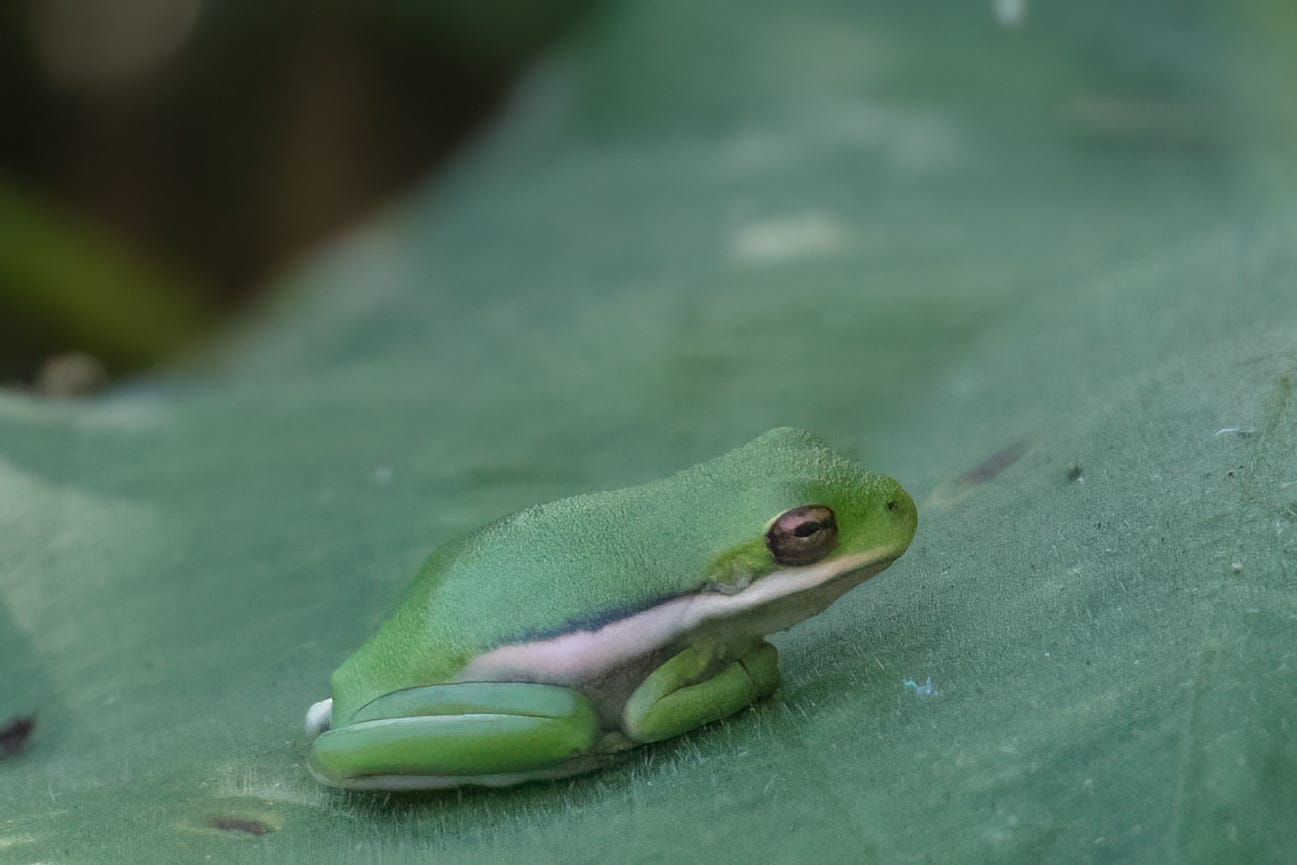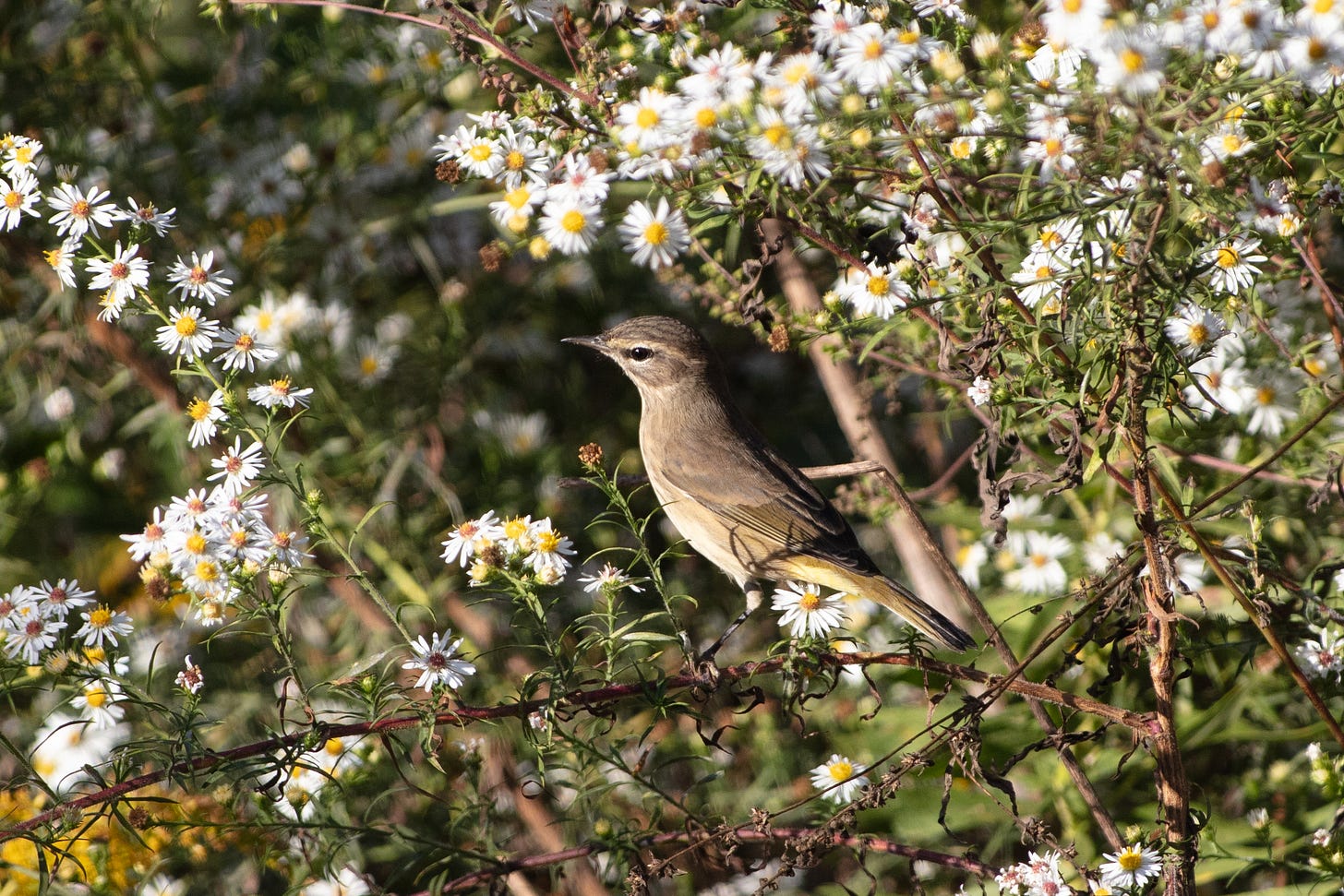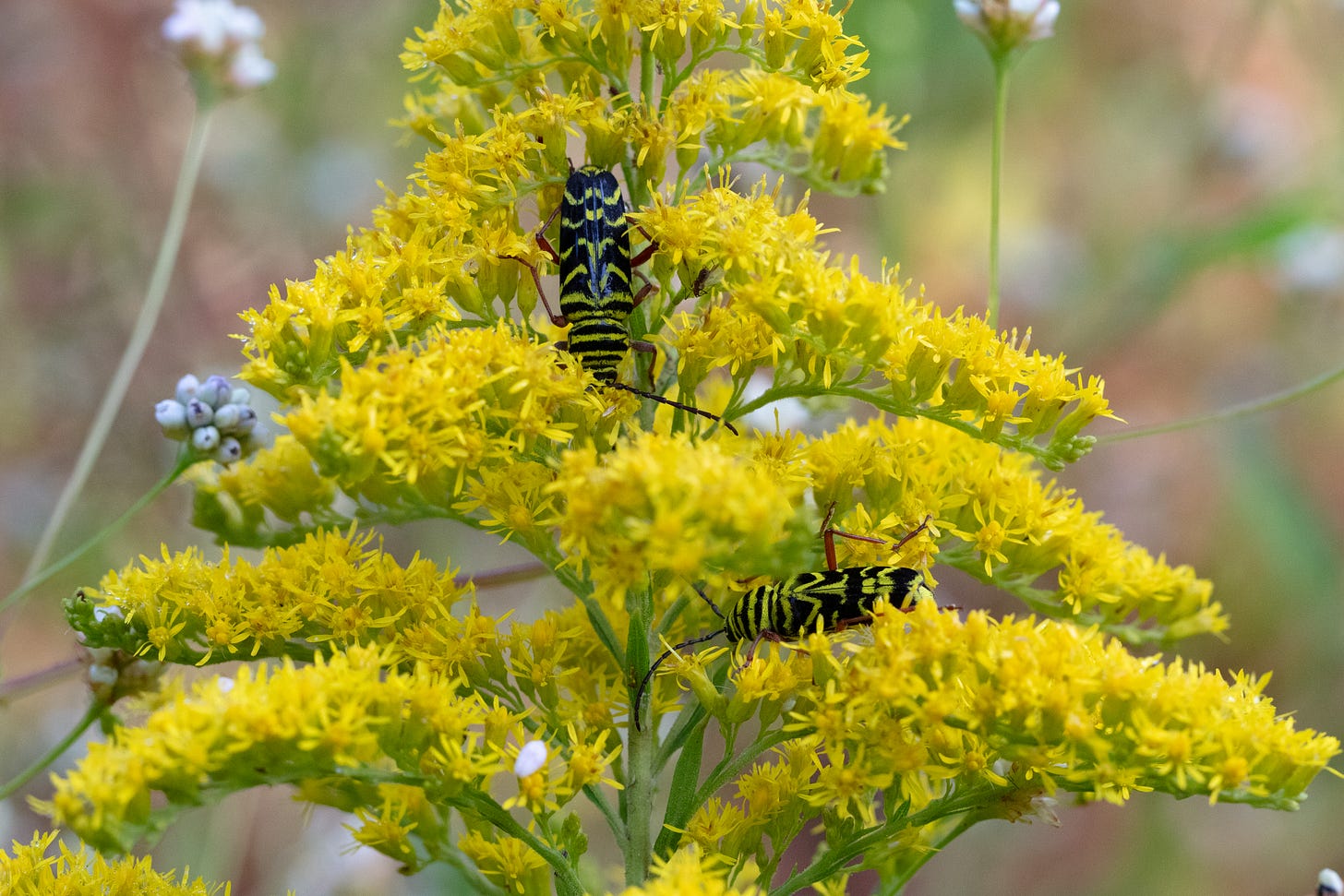
A yellow plume of goldenrod stretched above the tangled stems of arrow-leaved tearthumb. The goldenrod hosted a pair of black beetles; the tearthumb stems held tightly clasped clusters of delicate white flowers, round like seed pearls and so small that the open flowers and closed buds look almost the same. The tearthumb’s stems bear shiny, sharp teeth, an edge that cut my skin the first time I tried to lovingly run my fingers through the snarled skein of plants.
Yellow — precisely the color of the goldenrod — striped the head and thorax of the black beetle in thin, straight lines, and bent into large, curvy V’s over the long wide wings that covered the beetle’s abdomen. How many times have I walked by such beetles, blending in with florets of goldenrod and the shadows between them? These two beetles had caught my left eye as I squeezed through a narrow passage, walled on either side by a tall, dense web of wildflowers and vines, to the muddy shore of a pond, where I’d planned to look for dragonflies. Before I’d made it to my destination, I found these beetles — Megacyllene robiniae, locust borer beetles — a life first for me.
A lifer is always something to celebrate, especially when it’s unexpected, in a place one visits multiple times a week (including one’s own yard), a place filled with invasive plants, much of its surface turfgrass, much of it paved, and on all sides surrounded by houses or busy, city roads. It is a reminder that I do not need to travel far to find wonder. I don’t need to go to a nature preserve. Wonder might even be in the city. It may be surrounded by buildings. It is hiding in plain sight; we walk by it every day. It is a reminder to be observant and not take everyday spaces for granted.
It was in that same narrow passage that I had found, a few weeks earlier, the ironweed leaf rust, Coleosporium vernoniae — another species I had never seen before. I have seen its cousin, Coleosporium elephantopodis, many times, as bright round spots and concentric circles stamped upon the wide, thick leaves of elephant’s-foot (Elephantopus sp.), a wildflower that grows on the shady edges of hiking trails and in my backyard. Its small, composite heads of pale purple flowers rest in a cup of three bracts (a special kind of leaf), thick, woolly, and sort of triangular. In contrast to the small flowers, the plant’s leaves are huge, especially the basal leaves — long and wide, lying flat on the ground. The orange rust just adds to the unusual beauty of this common plant.
The ironweed (Vernonia sp.) stuck out from the tangled tearthumb at the edge of the dense wall of plants lining the narrow passage, and like elephant’s-foot, it has small purple flowers arranged in composite heads, but its flowers are bright, dark purple; like elephant’s-foot, this ironweed has thick leaves, but they are narrow and rough, not soft like the downy leaves of elephant’s-foot. Constellations of small orange speckles glowed on those leaves, infected with Coleosporium rust.
I still haven’t found dragonflies at the end of the passage, by the pond’s muddy shore. On the day I saw the locust borer beetles, I found golden eyes and a green snout facing me on the pond’s shallow surface — a bullfrog, mostly submerged, had cautiously peeked just the top of its head above the brown water and pinkish water weeds. Another morning, I found a tiny green tree frog resting on a large leaf; the frog sat patient and still as I took many photos.
As I move through the passage, the songs and calls of birds sound from within the dense vegetation — the single-note sweet metallic call of a cardinal; the high, excited chip of song sparrows; harsh chattering of brown thrashers; phoebes singing the song for which they are named; and until recently, catbirds mewing. The catbirds are gone until next spring. Some mornings I have seen a single yellow-green Tennessee warbler ascend from the wildflower tangle to rest on the sunny branch of a nearby tree. Tennessee warblers, too, will soon be gone until spring.
When I walked through that passage this week, the goldenrod where I had seen the locust borer beetles was nowhere to be found; I imagined it a collapsed, brown thing. Where it had stood, the tearthumb stems crisscrossed one another, some already brown, and their flower heads had turned from clusters of pearls to seed-brown capsules. It is the time of year when wildflowers and grasses fade from green, to yellow, to beige or tan or brown. Plumes of yellow goldenrod have become plumes of brown capsules clinging to the flower stalks in the same shape and arrangement as the florets had; like many wildflowers, they become monochrome ghosts of their summer selves.

Thinking of the lost goldenrod that had once stood above the tearthumb tangle, the word “barren” came into my mind. But that wasn’t true. Much of the pond’s shore and the nearby meadow are draped in the arcing stems of oldfield aster, laden with hundreds of white and yellow flowers. Just last week, these flowers provided nectar to migrating monarchs passing through on their long journey to Mexico. Bees and butterflies still visit these asters and even the tearthumb; in some spots, the flowers have held on for a few more days. On Friday, gulf fritillaries, fiery skippers, and painted lady butterflies still floated among the asters. Long-horn bees visited the wall of tearthumb along the pond’s shore, small black bees with bands of golden fur and eyes that appear blue at certain angles. Their back legs are covered in thick yellow fur, as though they are wearing baggy pants. Syrphids, a kind of bee mimic also known as flowerflies, flew among the long-horn bees. As fall grows longer and colder and many insects disappear, syrphids will linger into November. While the catbirds have gone, palm warblers have arrived, perching in the meadow and wagging their long, tan tails, up and down, like a cheerful greeting, and showing the bright yellow feathers beneath.
“Barren” was the word that appeared in my head, a word I found myself wanting to use, but not because it was true. I was just sad to see the summer go.
All photos (except the Coleosporium) were taken this fall at Legacy Park in Decatur, GA, one of my frequent nature spots. With a forest, orchard, meadow,1 and pond, it’s a great place to see migrating birds in spring and fall,2 and lately I’ve start paying more attention to the insects visiting the park’s flowers. The park’s website is here. It was formerly a children’s home, so there are a lot of driveways and buildings and it can be confusing. This ATLNature post highlighting Legacy Park provides a lot of useful information, including a map.
Much of the meadow has recently been lost to construction, but a few sections remain.




